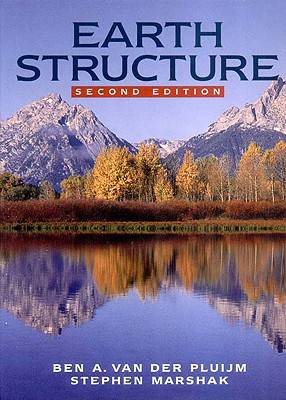
- Afhalen na 1 uur in een winkel met voorraad
- Gratis thuislevering in België vanaf € 30
- Ruim aanbod met 7 miljoen producten
- Afhalen na 1 uur in een winkel met voorraad
- Gratis thuislevering in België vanaf € 30
- Ruim aanbod met 7 miljoen producten
Zoeken
Earth Structure
An Introduction to Structural Geology and Tectonics
Ben A Van Der Pluijm, Stephen Marshak
Hardcover | Engels
€ 248,45
+ 496 punten
Omschrijving
Earth Structure shows how assemblages of structures relate to different geological settings in the context of plate tectonics. Chapters are self-contained modules that can be arranged in various sequences depending on instructor preference, and the book uses a conversational writing style, employing familiar analogies and field examples. Mathematical analysis, where used in the book, is kept at a basic level.
Popular features include:
- Self-contained chapters on deformation mechanisms (both brittle and plastic) and deformation products (fractures, faults, folds, and fabrics) that allow instructors to provide a foundation of understanding on "how" deformation takes place, as well as a thorough description of what deformation causes.
- Whole chapters on tectonic settings. These chapters allow the book to be used either for a one-semester course that relates deformation to tectonic settings or for a succession of two courses (one on structure and one on tectonics), thus enabling students to buy just one book.
- Essays on Regional Perspectives that provide information on tectonic analysis for eleven regions around the globe written by specialists in the area--discussions include the European Alps, the Altaids, the Appalachians, and the Cascadia Wedge.
- Over 570 detailed figures providing informative illustration of concepts.
Popular features include:
- Self-contained chapters on deformation mechanisms (both brittle and plastic) and deformation products (fractures, faults, folds, and fabrics) that allow instructors to provide a foundation of understanding on "how" deformation takes place, as well as a thorough description of what deformation causes.
- Whole chapters on tectonic settings. These chapters allow the book to be used either for a one-semester course that relates deformation to tectonic settings or for a succession of two courses (one on structure and one on tectonics), thus enabling students to buy just one book.
- Essays on Regional Perspectives that provide information on tectonic analysis for eleven regions around the globe written by specialists in the area--discussions include the European Alps, the Altaids, the Appalachians, and the Cascadia Wedge.
- Over 570 detailed figures providing informative illustration of concepts.
Specificaties
Betrokkenen
- Auteur(s):
- Uitgeverij:
Inhoud
- Aantal bladzijden:
- 672
- Taal:
- Engels
Eigenschappen
- Productcode (EAN):
- 9780393924671
- Verschijningsdatum:
- 29/12/2003
- Uitvoering:
- Hardcover
- Formaat:
- Ongenaaid / garenloos gebonden
- Afmetingen:
- 218 mm x 277 mm
- Gewicht:
- 1610 g

Alleen bij Standaard Boekhandel
+ 496 punten op je klantenkaart van Standaard Boekhandel
Beoordelingen
We publiceren alleen reviews die voldoen aan de voorwaarden voor reviews. Bekijk onze voorwaarden voor reviews.








